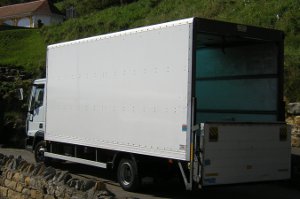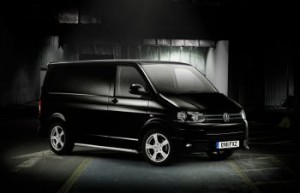
7.5t lorries are considerably bigger than vans. If you are driving one for the first time, you will need to take care.
So far in this series, I’ve looked at small, medium, large and luton vans. But what if you need something bigger still?
In terms of van hire, the main option available if you need something bigger than a luton or extra-long wheelbase panel van is 7.5t truck hire.
7.5 tonne lorries are far larger than even the largest of vans but also have a much greater payload. The difference between weight and space is important – sometimes, vans cannot carry enough weight, even when they have enough space.
As a general rule, a 7.5 tonne lorry will have a payload of around 3,000kg – approximately 2-3 times that of most 3.5 tonne vans. This will vary depending on the lorry’s body, make and model and whether it has a tail lift.
Can I Drive A 7.5t Lorry On My Car Licence?
Many drivers can drive 7.5t lorries on their car licences – it depends on when you passed your car driving test.
Drivers who passed their car test before 01/01/1997 should have category C1 on their driving licence. C1 is required to drive a goods vehicle with a maximum laden weight of between 3,500kg and 7,500kg.
Drivers who passed their car test after 01/01/1997 will not have C1 entitlement unless they have taken an additional C1 driving test.
You should also be aware that if you are driving a 7.5t lorry for hire or reward (i.e. not purely for personal use, such as moving house) you will be subject to tachograph rules.
As the driver, it is your responsibility to be aware of this and to comply. The Business Link website has a good introductory guide to tachograph law and the Direct Gov website is the best place to start if you are looking for information about driving licence requirements for goods vehicles.
About 7.5t Lorries
As their name suggests, 7.5t lorries have a MAM of 7,500kg. This class of vehicle really includes all goods vehicles (vans and lorries) with a MAM (maximum laden weight) of between 3,500kg and 7,500kg.
Speed limits for lorries up to 7.5t are the same as for vans up to 3.5t:
- Single carriageways: 50mph
- Dual carriageways: 60mph
- Motorways: 70mph
However, almost all vans and lorries over 3.5t are now fitted with speed limiters set to 56mph, so the dual carriageway and motorway speed limits are now irrelevant.
Driving 7.5t Lorries
If you have not driven a lorry before, you will find driving a 7.5t truck quite different to driving a van or car.
The seating position places you directly above the front wheels, meaning that you are further forward in the vehicle than you are used to and may feel that you have to turn into corners later than usual in order to get the correct line (and avoid the pavement).
Similarly, braking and handling will be quite different to a van or car and the handbrake is likely to be an air brake, controlled by a lever on the dashboard.
On top of all of this, a 7.5t box lorry will be much wider, higher and longer than anything you have driven before. Make sure you know the overall height and width of the vehicle and keep an eye out for low bridges and other restrictions. Do not turn into roads with a signposted 6’6″ width restriction – you will get stuck.
Make sure your mirrors are correctly adjusted and that you understand how to use them to check the space around you. Be careful and don’t try to rush.
Disclaimer
All the information in this article is provided for information only and is especially not intended to be a definitive statement on tachograph law. If you need to know the exact dimensions or payload of the vehicle you are hiring, you will need to speak to the company concerned when making your booking.
It is standard practice in the car and van hire industry to specify a ‘typical’ model when customers make bookings – this won’t necessarily be the exact make or model you get. Usually, this doesn’t matter, but it can do if space or weight is tight.

 If you and some friends are heading down to Cornwall (or any of the other good surfing areas in the UK) to do some surfing, you may find that your normal wheels are not quite up to the job.
If you and some friends are heading down to Cornwall (or any of the other good surfing areas in the UK) to do some surfing, you may find that your normal wheels are not quite up to the job.


 In part 2 of my guide to popular
In part 2 of my guide to popular 

